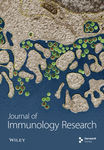Kupffer Cell-mediated Recruitment of Dendritic Cells to the Liver Crucial for a Host Defense
Abstract
Tissue recruitment of dendritic cells (DCs) is essential for antigen presentation. When latex particulates were injected intravenously into rats, DC precursors were recruited to the liver. Propionibacterium acnes also induced the recruitment of definite mouse DC precursors. These DCs initially showed a selective binding to Kupffer cells. In the Kupffer cell-depleted rats, DCs could neither be recruited to the liver nor adhere to sinusoidal walls. Pretreatment with varied monosaccharides in vitro showed that sugar residues consisting of N-acetylgalactosamine were necessary for this binding. Mouse DC precursors had CC-chemokine receptor 1 and 5, while granulama tissues and rat Kupffer cells expressed the corresponding chemokine, macrophage inflammatory protein-1α. Recruited DC precursors phagocytosed latex or bacteria and some of them soon translocated to hepatic nodes and induced the immune response there. We conclude that after invasion of pathogens, Kupffer cells not only scavenge them but also recruit DCs/DC precursors via chemokine- and N-acetylgalactosamine-mediated interactions. The accelerated DC traffic and the presence of blood-lymph translocation would induce rapid and efficient immune responses and thus contribute to the local defense to antigens within liver tissues as well as systemic defense to blood-borne antigens.




